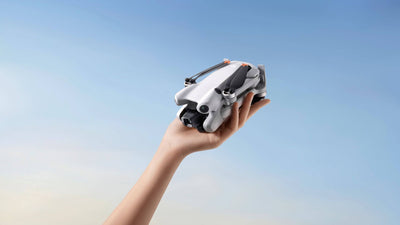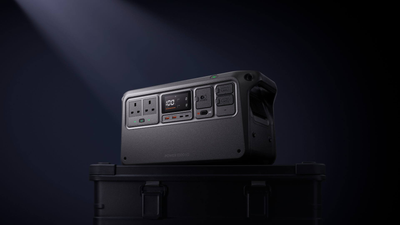How Will The 2026 Drone Regulation Changes Affect Flying In The UK?
- by Stefan Gandhi
The UK drone world is on the cusp of a major shift in regulatory design. Starting 1 January 2026, the Civil Aviation Authority (CAA) plans to roll out a new structure built around UK specific class marks and a phased Remote ID requirement. These changes aim to modernise oversight of unmanned flight, align with international norms, and sustain operational freedom for both hobbyists and professionals. This article breaks down what’s changing, how it affects different users and what you can do now to stay ahead.
Why Change The Rules Now
UK airspace is evolving. As drones grow more ubiquitous, the risks of conflict or misuse rise. The CAA’s new framework aims to set baseline safety and technical standards (via class marks) and ensure traceability of drone flights (via Remote ID). The goal is balanced: establish clarity and safety, without stifling innovation or rendering existing fleets obsolete.
The class marking system brings transparency: knowing a drone’s class tells you exactly which operational rules apply. Meanwhile, Remote ID ensures authorities can identify drones during flight, discouraging irresponsibility or illicit use. In short, regulation is shifting upstream from policing behaviour to embedding compliance in the aircraft itself.
The Open Category And Its Subcategories
The Open category is where most consumer and light-commercial drones operate. Under the new regime, it is subdivided into:
- A1 – Over People: For low risk, light drones (UK0, UK1, or legacy under 250g). Flights over uninvolved persons are allowed (but not over gatherings)
- A2 – Near People: For medium drones (UK2 or legacy under 2kg). You may fly closer to uninvolved persons (30m standard, reduced to 5m in low speed mode for UK2 aircraft), assuming you hold an A2 Certificate of Competency (A2 CofC). Legacy drones under 2kg must maintain a 50m horizontal separation.
- A3 – Far from People: The default for larger drones or operators without additional qualifications. Flights must stay at least 150m from residential, commercial, or industrial zones and 50m from individual uninvolved persons or buildings.
Baseline rules remain unchanged: you must maintain Visual Line of Sight (VLOS), fly below 120m, give way to manned aircraft, and avoid carrying dangerous goods or dropping objects. Night flight is permitted if your drone has suitable lighting.
The UK Class Mark System Explained
From 2026, drones placed on the UK market must carry a UK class mark UK0 through UK6. These reflect weight, safety capability and permissible operational domain. Much of this mirrors the EU’s C class scheme but is adapted to UK standards.
Here’s how classes break down:
- UK0 (under 250g): Qualifies for A1 operations with minimal restrictions.
- UK1 (under 900g): Also permits A1 operations, but aircraft must integrate safety features such as low speed mode, impact energy limits, geo-awareness, and built-in Remote ID.
- UK2 (under 4kg): Eligible for both A2 and A3 operations. With A2 CofC, you may fly 30m from uninvolved persons (5m in low speed mode). Without that qualification, UK2 defaults to A3.
- UK3 (under 25kg): Restricted to A3 operations; suited to heavier professional systems.
- UK4: For model aircraft and DIY builds lacking advanced automation; operates under A3 rules without the requirement for full electronic compliance.
- UK5 and UK6: Reserved for Specific Category operations requiring a full Operational Authorisation.
A class mark must physically appear on the drone to confirm compliance.
Legacy Drones And Their Ongoing Use
Drones purchased before 1 January 2026 (without UK class marks) are designated legacy drones. They remain fully legal and usable but operate under transitional conditions based on weight and pilot qualifications.
- Under 250g legacy drones: May continue operating under A1 rules with minimal restrictions.
- 250g–25kg legacy drones: By default must fly under A3 constraints. If the pilot holds an A2 CofC, they may operate drones under 2kg in A2 (maintaining 50m separation) indefinitely. However, these drones cannot benefit from reduced separation distances unless upgraded to UK2 standards.
Remote ID: The Digital Licence Plate For Drones
Remote ID (RID) requires drones to broadcast real-time identification and location data. This helps authorities trace drones mid-flight and promotes accountability.
Timeline for Implementation:
- From 1 January 2026: Class-marked UK1, UK2, UK3, UK5 and UK6 drones must broadcast Remote ID during all flights.
- From 1 January 2028: All remaining drones 100g or heavier with cameras, including legacy, UK0, homebuilt, and model aircraft, must comply.
Remote ID does not transmit personal details or camera feeds. It includes the drone’s serial number, operator ID, flight data and location.
Operating a class-marked drone without Remote ID after the deadline will be a criminal offence.
Pilot Registration And Competency
Alongside these technical changes, the UK is also revising its registration and pilot competency rules:
- Flyer ID: Now required for drones 100g and above (previously 250g). Obtained via an online theory test.
- Operator ID: Required for anyone flying a drone 100g or more with a camera. Drones must display the Operator ID.
- A2 CofC: Remains a key certification enabling closer operations with UK2 drones and continued use of sub 2kg legacy drones in A2 operations.
Transition Timeline At A Glance
- Now to 31 Dec 2025: Existing rules apply. EU class marks are still recognised. Remote ID not required.
- 1 Jan 2026: UK class mark regime begins. Remote ID required for certain classes. New registration thresholds activated.
- Throughout 2026–2027: Transition period. EU class marks remain valid. Remote pilots should begin migrating to Remote ID and class-marked equipment.
- 31 Dec 2027: Final date for automatic EU C-class recognition. Post this, unconverted EU drones revert to legacy status.
- 1 Jan 2028: Remote ID mandatory for nearly all drones 100g or more with cameras.
Impact By User Type
Recreational Flyers
Most hobbyists flying drones under 250g will see minimal change, apart from needing registration and enabling Remote ID (by 2028). New drone purchases should prioritise class-marked UK0 or UK1 drones to access A1 privileges.
A2 CofC Holders
These pilots retain valuable privileges for legacy drones under 2kg, but will eventually need UK2 drones to access closer proximities. The transitional allowance for 250–500g drones in A1 ends in 2026.
Professionals
Commercial operators must ensure fleet compliance with class markings, activate Remote ID on eligible drones and maintain valid qualifications. Updated SOPs and risk documentation will be essential.
Model Aircraft Flyers
Many model aircraft fall into UK4. While largely exempt from class-mark requirements, Remote ID obligations may apply from 2028 if the aircraft is over 100g and carries a camera. Clubs may seek Article 16 Authorisations for exemptions.
FAQs
Do I need a new drone in 2026 if mine is a legacy model?
No. Legacy drones remain legal but are limited in where and how they can fly. They do not benefit from the reduced separation distances available to class-marked drones.
When does Remote ID become mandatory?
From 1 January 2026 for certain class-marked drones. From 1 January 2028 for almost all drones 100g or more with cameras.
Can I fly over people with a UK1 drone?
Yes. UK1 drones allow flight over uninvolved persons (but not large assemblies), subject to standard A1 restrictions.
Will my EU drone still work after 2026?
Yes, EU C-class drones are recognised until 31 December 2027. After that, they become legacy drones unless converted to UK standards.
Do model aircraft require Remote ID?
Yes, from 2028 if the aircraft is over 100g and equipped with a camera, unless operating under specific club-based exemptions.
Do I need to retake my Flyer or Operator ID tests?
No, but you must ensure your credentials remain valid. All applicable drones 100g or more must meet the new requirements.
Conclusion
The UK’s 2026 drone regulation overhaul is a defining moment for unmanned aviation. With clear classifications, Remote ID enforcement, and updated pilot obligations, the changes usher in a safer and more structured future. Legacy drones will still have their place, but the greatest freedoms and privileges will be reserved for class-marked systems designed to meet tomorrow’s standards.
Remote pilots who plan ahead, adopt compliant systems and embrace certification will be best positioned to enjoy unrestricted flying. The regulatory shift is not a limitation; it is an opportunity to professionalise, innovate and participate in a more sustainable drone ecosystem.
Whilst this guide has been put together to help inform you about the changes coming in the UK, we still recommend going to the CAA website yourself and doing your own research to ensure you are on top of the changes for your own flying needs.
Explore the latest drones and online training courses at the Coptrz official online store here.




